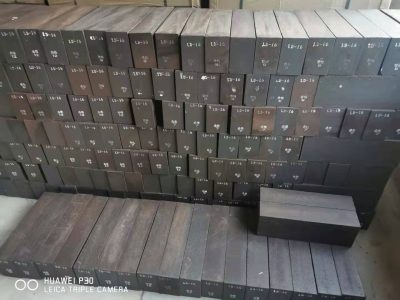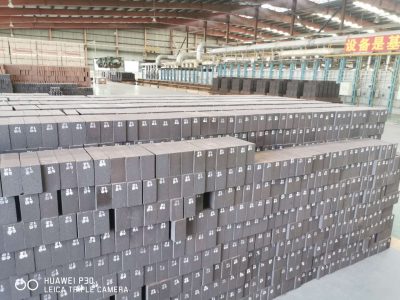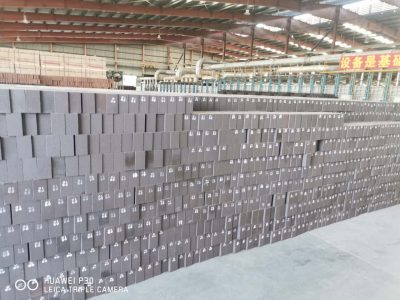Magnesia-chrome bricks are the most widely used refractory bricks in copper smelting thermal kilns. They are the main configuration in common copper smelting thermal kilns such as top-blown converters, horizontal converters, anode furnaces, flash furnaces, electric furnaces, Kiefset furnaces, Ausmelt furnaces, reverberatory furnaces, oxygen-enriched bottom-blown furnaces, etc.
Magnesia-chrome bricks, as the name implies, are made of sintered magnesia sand and chrome sand in a certain proportion, with additives added to form and sinter. According to its chemical properties, magnesia-chrome bricks are alkaline refractory bricks. They are most widely used in non-ferrous metals, especially copper smelting, and secondly, they are also widely used in cement production.
Magnesia-chrome bricks can be roughly divided into six different types according to their different production methods.
1) Silicate bonded magnesia-chrome bricks;
2) Direct bonded magnesia-chrome bricks;
3) Electrofused rebonded magnesia-chrome bricks;
4) Semi-rebonded magnesia-chrome bricks;
5) Melted cast magnesia-chrome bricks;
6) Chemically bonded unfired magnesia-chrome bricks;
Among them, the most widely used in copper smelting thermal furnaces are: direct bonded magnesia-chrome bricks, semi-rebonded magnesia-chrome bricks and electrofused rebonded magnesia-chrome bricks.
1. Direct bonded magnesia-chrome bricks
Direct bonded magnesia-chrome bricks have high high temperature strength, slag resistance, erosion resistance, scouring resistance, corrosion resistance, excellent thermal shock stability and volume stability at 1800℃. The main application parts of direct bonded magnesia-chrome bricks are: the non-working layer of the bottom and wall of the top-blown converter; around the horizontal converter cylinder; around the anode furnace cylinder; the wall of the Kifset furnace; the wall of the Ausmelt furnace; the top and wall of the reverberatory furnace; the upper part of the slag line of the oxygen-enriched bottom-blown furnace.
2. Fused rebonded magnesia-chrome brick
Fused rebonded magnesia-chrome brick is made by melting raw materials by electric melting method to make fused magnesia-chrome material, crushing into a certain particle size, mixing, molding and sintering. Rebonded magnesia-chrome brick is a fine-grained matrix with uniform pore distribution and micro cracks, and its sensitivity to sudden temperature change is better than that of fused cast brick. The high temperature performance of fused rebonded magnesia-chrome brick is between that of fused cast brick and direct bonded brick.
The main application parts of fused rebonded magnesia-chrome brick are: the working layer of the top-blown converter furnace, which is in direct contact with the copper liquid; the mouth of the horizontal converter; the mouth of the anode furnace; the reaction tower of the flash furnace; the mouth of the electric furnace; the working layer of the bottom of the Kifset furnace; the furnace wall and bottom of the Ausmelt furnace; the lower part of the slag line and the eye area of the oxygen-enriched bottom-blown furnace.
3. Semi-rebonded magnesia-chrome brick
Semi-rebonded magnesia-chrome brick refers to a refractory product fired with part of the fused magnesia-chrome sand as raw material. The main mineral composition of semi-rebonded magnesia-chrome brick is periclase, spinel and a small amount of silicate. Its thermal shock resistance is better than that of directly bonded magnesia-chrome bricks. The main application areas of semi-rebonded magnesia-chrome bricks are: the wall of the flash furnace sedimentation tank; the furnace of the electric furnace; the Ausmelt furnace; the working layer and copper outlet of the reverberatory furnace bottom;
In actual application, reasonable magnesia-chrome brick configuration should be carried out according to the kiln structure and working environment. In addition to the above-mentioned magnesia-chrome bricks, magnesia-chrome ramming materials, magnesia sand fillers, magnesia-chrome castables and other magnesia-chrome amorphous refractory materials are also used in copper metallurgical thermal kilns.



